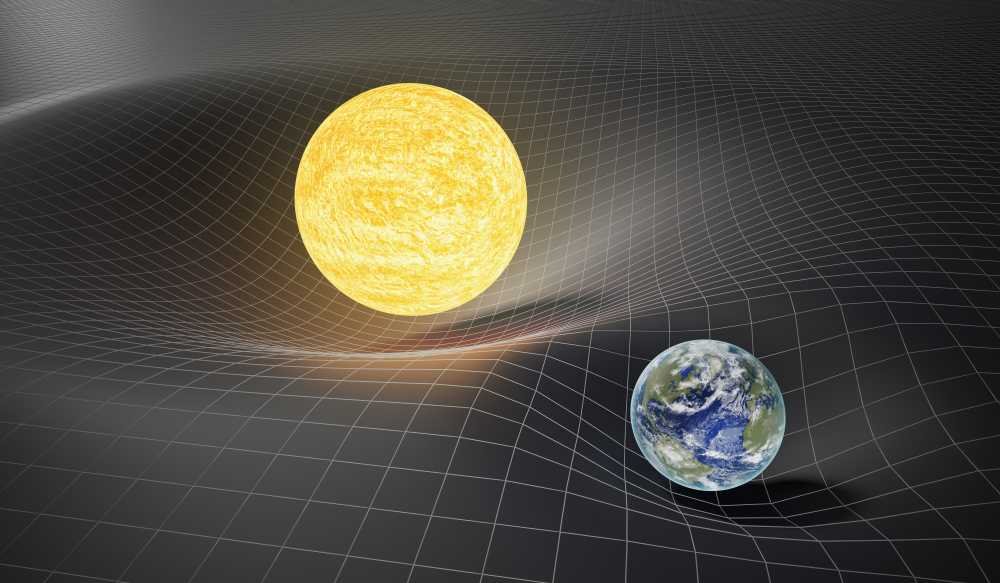This post assumes prior knowledge of philosophical vocabulary and concepts.
Not every philosopher believes that spacetime really exists, or in other words that it is a real substance in and of itself. But many do, and they are called substantivalists (whilst their opponents are called relationists).
But an important debate rages between two camps of substantivalists. Substantivalists may disagree about a fundamental aspect of the way we think about reality:
"Are objects are distinct from spacetime?"
If you think they are, you're a substantival dualist. Otherwise, you're a supersubstantivalist – you think the material objects are identical with spacetime.
This is a post about this particular debate, defending supersubstantivalism, so throughout this post, we'll assume spacetime exists, and I won't comment further upon that here – there's enough depth in this post!
Let's begin by giving some loose definitions of both – although there are variations of each.
Substantival Dualism – material objects occupy regions of spacetime. There is an occupation relation that holds between material objects and spacetime.
Supersubstantivalism – material objects are identical with regions of spacetime
I should begin by emphasising that I believe material objects are identical with spacetime: I am a supersubstantivalist. I use it to motivate and explain my the subject of my main philosophical agenda, existence monism. I have generally been more motivated to provide arguments for supersubstantivalism, and defend it from detractors.
We'll start by looking at a few reasons why we might decide to be supersubstantivalists, before looking at a couple of potential problems with it.
Motivations for Supersubstantivalism
It's parsimonious and simple
It's not obvious why spacetime could not fulfil the roles which material objects are generally thought to fulfil. And if it can, it's more parsimonious and simple to say that material objects don't exist independently of spacetime – they're identical with it.
For example, if we subscribe to the view that the primary role of material objects is to bear properties (I don't, but that's not the point), a distinction between spacetime and material objects is redundant.
Wherever we find properties, we would usually assume that there is something to bear those properties – such as a material object. But there is no reason why spacetime could not bear those properties directly, so a dualism of spacetime and material objects looks surplus to requirement.
Of course, if we believe that properties have no genuine ontological commitments, we might not find this very convincing. Most philosophers, however, are persuaded by the view that we should include properties in our ontology. Personally I believe they are simply perceptual variations de dicto based on variations in sub-regions of spacetime. Nevertheless, firstly, this may convince someone who believes something must bear properties, and secondly, we need not posit material objects as mere bearers of properties. We might think they serve some other purpose. In this case, if we subscribe to principles of parsimony, the onus would be on the dualist to explain why spacetime could not take on any particular role in place of a material object.
No gaps, no overlaps
Each region of spacetime can contain at most one object, and material objects must occupy one, and only one, region of spacetime. No gaps, no overlaps, as Jonathan Schaffer puts it.
Since fundamental entities like the cosmos must be complete, if the entities do not cover the cosmos then the cosmos would be incomplete, so there can be no gaps. Objects should be freely recombinable (like building blocks). Overlapping entities are “modally constrained" because you cannot let the common part have differing properties, so there can be no overlaps.
It should not be seen as a coincidence that there can be no gaps nor overlaps in the cosmos. The most parsimonious explanation is that they are identical and dualism is false.
One might point out that it seems obvious that areas of spacetime can be empty. 0.0000000000000000000042% of space is empty! But if we take Quantum Field Theory seriously (which we should – see below!), then empty regions are impossible – the field exists everywhere. We can think of it as being a bit like binary – 0s and 1s make up the fabric (rather than simply empty regions).
Coincidence of Properties
The fact that both material objects and spacetime have geometrical and mereological properties need not be a coincidence if they are identical.
Giving credence to substantival dualism alongside our standard principles of modal recombination, it should be clearly possible for my pen to have occupied a region of spacetime that was a different space to my pen. Yet this never happens.
That should lead us to believe that either we should seriously question our understanding of modal recombination (which to most will seem undesirable) or wonder whether there is a more obvious reason for the perfect tesselation of spacetime regions and material objects: that they are identical.
General Relatvity and Quantum Field Theory
Neither General Relativity nor Quantum Field Theory make any reference whatsoever to material objects at all when modelling the distribution and action of matter. All that is required is a field. As Einstein has it: "physical space and the ether are only different terms for the same thing; fields are physical states of space".
We know that we can describe the electromagnetic state of physical matter completely only by considering particles and waves as a strict duality. So substantival dualism appears to rest upon purely intuitive notions of objecthood and flies in the face of our best science.
Neither General Relatvity nor Quantum Field Theory require objects at all. My pen, the moon, the solar system – all are described entirely with reference only to the field.
Indeed, then, the most reliable way of interpreting the models is to take them as representative of spacetime itself.
Spatiotemporality
To be spatiotemporal is to be within spacetime. This is straightforward for the supersubstantivalist who can avoid some modal problems which arise when positing such a plethora of extra entities.
Let's consider a car. The engine is part of the car, and a particular piston is part of the engine. My pen is composite, so, necessarily, the piston is part of the car. There's a necessary relation between parthood and occupation to which the substantival dualist can, as far as I can see, give no answer.
For the supersubstantivalist, this is not a problem since no occupation relation is posited in the first place.
Two Problems with Supersubstantivalism
Intuition
"'A region of spacetime bounded out the door and barked at the mailman' – it sure sounds strange to say!" – Theodore Sider
Intuition is not a guide to reality. It's not intuitive that only 0.0000000000000000000042% of the universe has any matter in it. It's not intuitive that the expansion of the universe is accelerating constantly. History has taught us to be suspicious of appeal to intuition in science and in philosophy.
Ordinary language has boundaries, and we're surely far past them here. Notions of objecthood and location are built into our everyday language because it helps us navigate the world.
Modality
We can use Reductio Ad Absurdum to provide a prima facie argument against supersubstantivalism.
1 My pen is a region of spacetime
2 My pen could have been a metre to the left of where it actually is
3 Regions of spacetime couldn't have been a metre to the left of where it actually is
C. My pen is not a region of spacetime
This is a good argument. Spacetime regions appear to have their locations necessarily, but the locations of material objects don't feel essential. It appeals to intuition and backs us into a modal corner. But there are responses the supersubstantivalist could give.
We could deny P2 by saying that something like my pen in every important respect could have been a metre to the left of where it actually is. It is not compulsory to subscibe to the common conception of modality.
I am attracted to an alternative model of metaphysics which allows us to make another reply. Supersubstantivalism has been used to buttress both priority and existence monism in recent years. If we completely reject notions of objecthood altogether, as the existence monist does, we can simply say something to the effect that notions of "pens" are simply convenient designators and do not refer to anything in the world. The mereological nihilist might say that we have mereological simples "arranged pen-wise", the existence monist can say that we have a subregion of spacetime which conscious beings call "pens" since they are sufficiently similar to our notion of "pen".
We could, if we prefer, have a look at P3. Bradford Skow notes that we need to clarify what we mean by the premise. We need to say that if it is possible for something to have been a different location, there is a possible world in which its location relative to other regions at a time are different. This reality could be made true in two ways – region X might have been a different distance from region Y at another world, or the points within X or Y differ between worlds. The supersubstantivalist is forced to give up either geometric essentialism or compositional essentialism. The former isn't hard to give up, since it sits so badly with General Relativity anyway – we'll get to that later.
Another thing we could say is that P1 and P2 are context dependent, and they cannot both be true in the strict ontological context at the same time. We can use a counterpart-theoretic analysis of these modal claims to explain this – perhaps in one case we're making a geometrical counterpart claim, and in another we're making a counterpart claim about something else such as mass.
However we approach it, it seems there are a number of good replies we could make to the dualist.
We should be supersubstantivalists
In all of the cases we've seen, it looks as though positing material objects is redundant. In fact, not only is dualism wholly unecessary for explaining reality and thus flying in the face of naturalistic principles, but loses out to supersubstantivalism in terms of theoretical virtue.
If you're academically interested in this topic, you may like to read:



